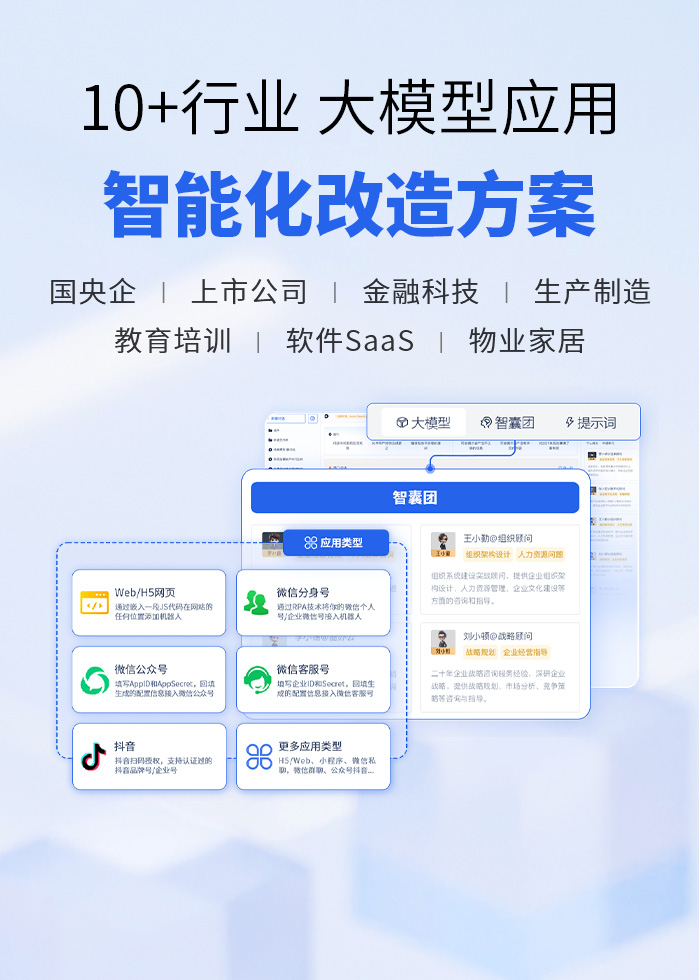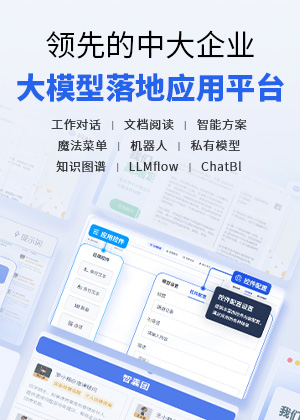tools是OpenAI的Chat Completion API中的一个可选参数,可用于提供函数调用规范(function specifications)。这样做的目的是使模型能够生成符合所提供的规范的函数参数格式。同时,API 实际上不会执行任何函数调用。开发人员需要使用模型输出来执行函数调用。
vLLM和SgLang均支持OpenAI-API的tool参数。通过tool参数以及其中的函数调用规范,QwQ将能决定何时调用什么样的函数,以及怎么调用函数。
注:本文测试用例参考OpenAI cookbook:https://cookbook.openai.com/examples/how_to_call_functions_with_chat_models
本文主要包含以下两个个部分:
模型部署:使用vLLM,SgLang和QwQ,通过设置参数,部署支持Function call的聊天API接口。
生成函数参数:指定一组函数并使用 API 生成函数参数。
模型文件下载
modelscope download --model=Qwen/QwQ-32B --local_dir ./QwQ-32B
环境安装
pip install vllmpip install "sglang[all]>=0.4.3.post2"
vLLM部署命令
vllm serve /ModelPath/QwQ-32B \--port 8000 \--reasoning-parser deepseek_r1 \--max_model_len 4096 \--enable-auto-tool-choice \--tool-call-parser hermes
sglang部署命令
python -m sglang.launch_server --model-path /ModelPath/QwQ-32B --port 3001 --host 0.0.0.0 --tool-call-parser qwen25
模型调用
使用OpenAI的API格式调用本地部署的QwQ模型
单轮对话
from openai import OpenAI # 设置 OpenAI 的 API 密钥和 API 基础 URL 使用 vLLM 的 API 服务器。openai_api_key = "EMPTY"openai_api_base = "http://localhost:8000/v1" client = OpenAI(api_key=openai_api_key,base_url=openai_api_base,) # 使用流式输出(stream=True)chat_response = client.chat.completions.create(model="path/to/QwQ-32B",messages=[{"role": "user", "content": "你好"}],stream=True# 启用流式响应) # 处理流式输出contents = []for e in chat_response:# print(e.choices[0].delta.content,end="")contents.append(e.choices[0].delta.content)print("".join(contents))多轮对话
from openai import OpenAIimport os# 初始化OpenAI客户端client = OpenAI(api_key = "empty",base_url="http://localhost:8000/v1")reasoning_content = ""# 定义完整思考过程answer_content = "" # 定义完整回复is_answering = False # 判断是否结束思考过程并开始回复messages = []conversation_idx = 1while True:print("="*20+f"第{conversation_idx}轮对话"+"="*20)conversation_idx += 1user_msg = {"role": "user", "content": input("请输入你的消息:")}messages.append(user_msg)# 创建聊天完成请求completion = client.chat.completions.create(model="path/to/QwQ-32B",# 此处以 qwq-32b 为例,可按需更换模型名称messages=messages,stream=True)print("\n" + "=" * 20 + "思考过程" + "=" * 20 + "\n")for chunk in completion:# 如果chunk.choices为空,则打印usageif not chunk.choices:print("\nUsage:")print(chunk.usage)else:delta = chunk.choices[0].delta# 打印思考过程if hasattr(delta, 'reasoning_content') and delta.reasoning_content != None:print(delta.reasoning_content, end='', flush=True)reasoning_content += delta.reasoning_contentelse:# 开始回复if delta.content != "" and is_answering is False:print("\n" + "=" * 20 + "完整回复" + "=" * 20 + "\n")is_answering = True# 打印回复过程print(delta.content, end='', flush=True)answer_content += delta.contentmessages.append({"role": "assistant", "content": answer_content})print("\n")# print("=" * 20 + "完整思考过程" + "=" * 20 + "\n")# print(reasoning_content)# print("=" * 20 + "完整回复" + "=" * 20 + "\n")# print(answer_content)
首先,定义模型调用函数
from openai import OpenAI# 设置 OpenAI 的 API 密钥和 API 基础 URL 使用 vLLM 的 API 服务器。openai_api_key = "EMPTY"openai_api_base = "http://localhost:8000/v1"MODEL = "path/to/QwQ-32B"client = OpenAI(api_key=openai_api_key,base_url=openai_api_base,)def chat_completion_request(messages, tools=None, tool_choice=None, model=MODEL):try:response = client.chat.completions.create(model=model,messages=messages,tools=tools,tool_choice="auto",)return responseexcept Exception as e:print("Unable to generate ChatCompletion response")print(f"Exception: {e}")raise
然后,我们定义一些实用工具,用于调用聊天完成 API 以及维护和跟踪对话状态。
def pretty_print_conversation(messages):role_to_color = {"system": "red","user": "green","assistant": "blue","function": "magenta",}for message in messages:if message["role"] == "system":print(colored(f"system: {message['content']}\n", role_to_color[message["role"]]))elif message["role"] == "user":print(colored(f"user: {message['content']}\n", role_to_color[message["role"]]))elif message["role"] == "assistant" and message.get("function_call"):print(colored(f"assistant: {message['function_call']}\n", role_to_color[message["role"]]))elif message["role"] == "assistant" and not message.get("function_call"):print(colored(f"assistant: {message['content']}\n", role_to_color[message["role"]]))elif message["role"] == "function": print(colored(f"function ({message['name']}): {message['content']}\n", role_to_color[message["role"]]))这里假设了一个天气 API,并设置了一些函数规范和它进行交互。将这些函数规范传递给 Chat API,以便模型可以生成符合规范的函数参数。
tools = [{"type": "function","function": {"name": "get_current_weather","description": "Get the current weather","parameters": {"type": "object","properties": {"location": {"type": "string","description": "The city and state, e.g. San Francisco, CA",},"format": {"type": "string","enum": ["celsius", "fahrenheit"],"description": "The temperature unit to use. Infer this from the users location.",},},"required": ["location", "format"],},}},{"type": "function","function": {"name": "get_n_day_weather_forecast","description": "Get an N-day weather forecast","parameters": {"type": "object","properties": {"location": {"type": "string","description": "The city and state, e.g. San Francisco, CA",},"format": {"type": "string","enum": ["celsius", "fahrenheit"],"description": "The temperature unit to use. Infer this from the users location.",},"num_days": {"type": "integer","description": "The number of days to forecast",}},"required": ["location", "format", "num_days"]},}},]如果我们向模型询问当前的天气情况,它将会反问,希望获取到进一步的更多的参数信息。
messages = []messages.append({"role": "user", "content": "hi ,can you tell me what's the weather like today"})chat_response = chat_completion_request(messages, tools=tools)print(chat_response)assistant_message = chat_response.choices[0].messagemessages.append(assistant_message)assistant_message一旦我们通过对话提供缺失的参数信息,模型就会为我们生成适当的函数参数。
messages.append({"role": "user", "content": "I'm in Glasgow, Scotland."})chat_response = chat_completion_request(messages, tools=tools)assistant_message = chat_response.choices[0].messagemessages.append(assistant_message)assistant_message通过不同的提示词,我们可以让它反问不同的问题以获取函数参数信息。
messages = []messages.append({"role": "user", "content": "can you tell me, what is the weather going to be like in Glasgow, Scotland in next x days"})chat_response = chat_completion_request(messages, tools=tools)assistant_message = chat_response.choices[0].messagemessages.append(assistant_message)assistant_messagemessages.append({"role": "user", "content": "5 days"})chat_response = chat_completion_request(messages, tools=tools)chat_response.choices[0]并行函数调用
支持一次提问中,并行调用多次函数
messages = []messages.append({"role": "user", "content": "what is the weather going to be like in San Francisco and Glasgow over the next 4 days"})chat_response = chat_completion_request(messages, tools=tools, model=MODEL)assistant_message = chat_response.choices[0].message.tool_callsassistant_message

































 粤ICP备14082021号
粤ICP备14082021号